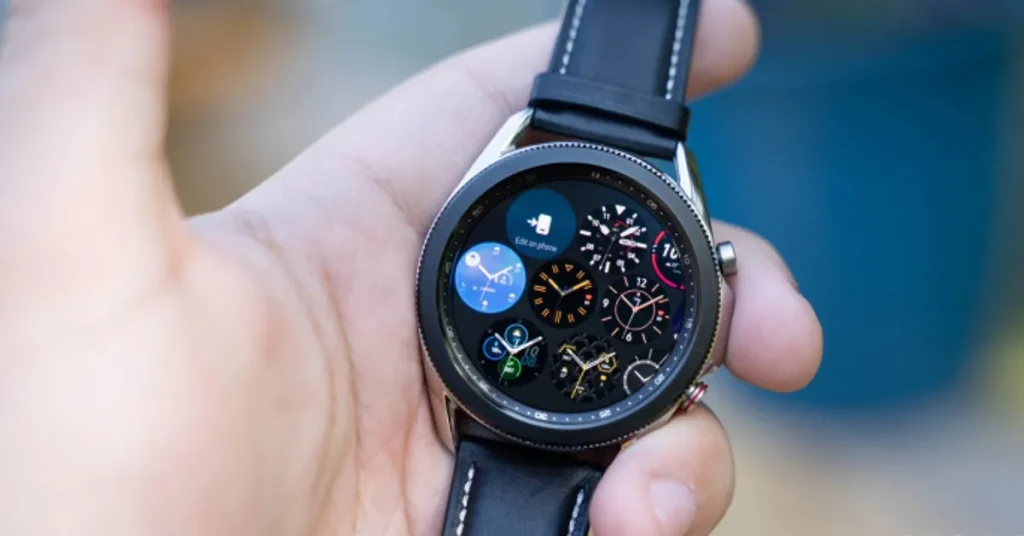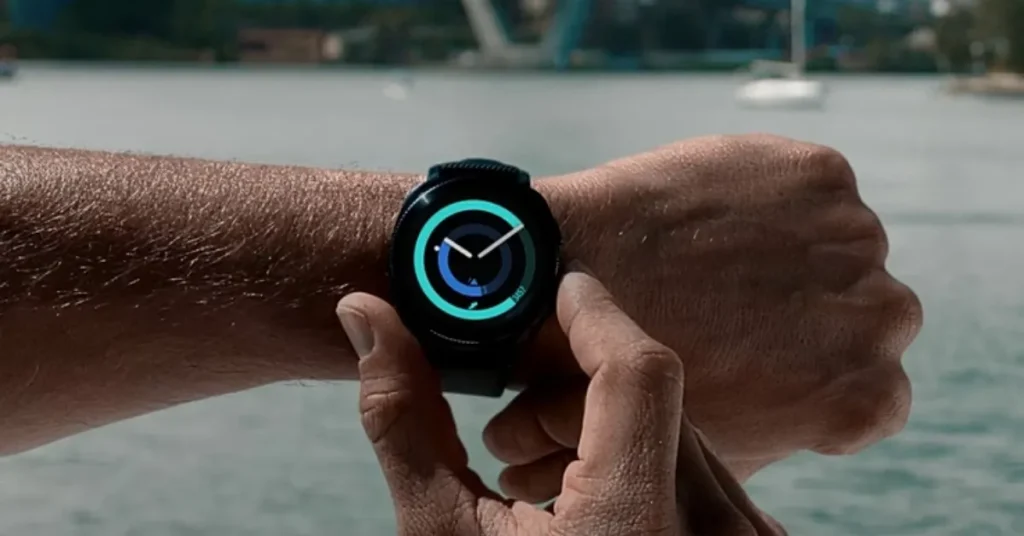A 5 ATM rating on a watch signifies it is resistant up to 50 meters or 164 feet underwater. The term “ATM” stands for atmospheres, a unit of pressure.
Diving into the details of water-resistant watches, a 5 ATM rating is suitable for everyday use and can withstand splashes, rain, and occasional swimming.
Watches with this rating are a solid choice for those who need durability without requiring professional diving features.
As customers consider their options, understanding water resistance levels becomes crucial—especially when activities involve water exposure.
A 5 ATM watch offers a balance of functionality and resilience, making it an ideal accessory for an active lifestyle.
It’s important for buyers to note that water resistance is about more than just depth; it also involves the resilience of a watch under various conditions and the sealing quality against water intrusion.

Decoding 5 Atm Ratings
Ever wonder what ‘5 ATM’ means on your watch? Let’s explore this common rating and understand what it really tells us about water resistance. Decoding 5 ATM Ratings unveils the mystery and helps you know just how wet your watch can get.
The Basics Of Water Resistance
Water resistance in watches isn’t about swimming depths. It’s about pressure. When manufacturers test for water resistance, they’re seeing how much pressure a watch can handle before water seeps in.
These ratings allow you to gauge everyday use, from washing hands to snorkeling adventures.
- Pressure Resistance: Measured in atmospheres (ATM).
- No Entry: A tight seal keeps water out.
- Daily Tasks: Most watches resist splashes.
- Check Ratings: Higher numbers mean more resistance.
Atm Vs. Depth
5 ATM doesn’t mean 50 meters of free diving. It means that your watch can withstand the pressure equivalent to that depth in a calm state, minus the movement which increases pressure. So, you can trust it for a shower, but don’t take it for a deep dive.
| ATM Rating | Equivalent Depth (Static) |
| 1 ATM | 10 meters |
| 3 ATM | 30 meters |
| 5 ATM | 50 meters |
| 10 ATM | 100 meters |
Remember, the 5 ATM rating does not take high-velocity water activities into account. Keep your watch safe and understand its limits.
Testing Procedures For 5 Atm

When a watch says it’s 5 ATM, it means it can handle pressures equivalent to a depth of 50 meters or about 164 feet. But how is this tested?
Knowing the testing procedures for 5 ATM rated watches helps us trust our timepieces not to let water in when we need them most. Let’s dive into the meticulous world of testing.
Laboratory Standards
Lab tests make sure 5 ATM watches can really go 50 meters deep. Here’s what happens:
- Pressure Simulation: Watches get put in a special tank. This tank simulates the pressure at 50 meters underwater.
- Temperature Variation: Experts change the water temperature to test the watch in different environments.
- Detailed Inspection: After the pressure test, each watch gets checked thoroughly. Any water inside means a fail.
Real-world Applications
Lab tests are tough, but the real world is tougher. Watches worn day to day meet a lot of challenges. Here are common real-world tests:
- Swimming: A swimmer takes the watch for a dip to check if it keeps water out.
- Shower Test: Wearing the watch in the shower simulates steam and soap effects.
- Movement Impact: Moving around a lot tests if daily motions can break the watch’s water seal.
5 Atm In Everyday Use
Understanding 5 ATM helps you know what your watch can handle. It’s a measure of water resistance.
Many watches and devices feature 5 ATM ratings. It means they can withstand pressures equivalent to a depth of 50 meters. Keep in mind, 5 ATM doesn’t mean going 50 meters underwater.
5 ATM devices are great for daily tasks. They resist splashes, rain, and brief immersion in water. Swimming on the surface is also okay. Deep diving? Not recommended. Think showers, handwashing, and surface swimming.
Suitable Activities
- Showering: With a 5 ATM rating, wear your watch during a quick shower.
- Swimming: It’s safe for pool or ocean surface swimming.
- Snorkeling: Snorkeling is okay, but don’t dive deep.
- Water Sports: Enjoy water sports without worry.
- Daily Wear: Wear it all day, rain or shine.
Common Misconceptions
| Misconception | Reality |
| 5 ATM means you can go 50 meters deep. | It’s about pressure, not depth. Surface swimming is best. |
| 5 ATM watches are dive-ready. | Not true. They’re not designed for diving. |
| Water resistance lasts forever. | Seals can wear out. Regular checks are essential. |
Maintenance Of Water Resistant Devices
Devices with a 5 ATM rating can withstand pressures equivalent to a depth of 50 meters.
Such gadgets need regular care to maintain their water-resistant qualities. Proper maintenance ensures their longevity and functionality. Let’s delve into how you can keep your water-resistant devices in tip-top shape.
Caring For Seals And Gaskets
Seals and gaskets are critical for water resistance. They prevent water from seeping into your device. Keep them clean and free from debris to ensure a tight seal. Here’s a simple guide:
- Clean seals with a soft cloth.
- Avoid exposing seals to extreme temperatures.
- Check for wear and tear regularly.
- Replace damaged seals immediately.
Lubricating seals can also keep them pliable. Use only the manufacturer-recommended products for this purpose.
Periodic Testing Tips
To ensure your device’s water resistance, periodic testing is key. Follow these steps for effective testing:
- Consult your device’s manual for testing instructions.
- Perform a pressure test annually.
- Check for signs of moisture accumulation.
- If your device has a water exposure indicator, check it after potential water events.
Consider professional testing if your device is frequently used in water. Experts can provide a full assessment and necessary repair.
Advancements In Water Resistance Technology

Watch wearers and water sport enthusiasts celebrate the leaps in water resistance technology. Not long ago, water could easily damage delicate mechanisms within watches.
Today, a rating like 5 ATM (atmospheres) means watches can endure pressures equivalent to a depth of 50 meters (164 feet).
This advancement has made everyday devices more durable and reliable. Let’s explore the materials and future prospects defining this exciting field.
Innovations In Material Science
Recent progress in material science plays a pivotal role. Engineers have created seals and gaskets out of advanced rubbers and polymers. These materials create a barrier, keeping water away from watch internals.
- Advanced Silicones: These create flexible, durable seals, adapting to various shapes and sizes.
- Improved Rubber Compounds: These have enhanced elasticity and resistance to temperature changes and corrosive substances.
- Composite Materials: They combine two or more distinct materials, creating hybrids that maximize water resistance qualities.
The combination of these new materials gives products like the 5 ATM-rated watches the ability to resist water intrusion successfully.
Future Of Water Resistance
The future shines bright for water resistance technology. Manufacturers aim for even higher ratings without compromising the design.
Research Direction: Researchers direct their efforts towards micro-scale coatings that repel water on contact.
Smart Features: The integration of smart technology continues to grow. This technology needs advanced water resistance to protect sensitive electronics.
Environmental Impact: Future designs prioritize eco-friendly materials, reducing the carbon footprint while enhancing performance.
These cutting-edge approaches ensure that the future devices will go deeper and last longer, even under extreme conditions.
FAQs About How Deep Is 5 Atm
What Does A 5 Atm Rating Signify?
5 ATM (atmospheres) indicates a watch can withstand pressures equivalent to a depth of 50 meters. This makes it suitable for shallow water activities such as swimming but not diving or high-impact water sports.
How Waterproof Is 5 Atm?
A 5 ATM water resistance means that a watch can resist the penetration of water up to 50 meters in depth. It is splash-resistant and suitable for daily use, including showering or swimming in still water.
Can I Dive With A 5 Atm Watch?
No, a 5 ATM watch is not designed for diving. While it can handle brief immersion in water, diving requires a watch with a higher ATM rating that can withstand the increased pressure at depth.
Is A 5 Atm Watch Good For Swimming?
Yes, a 5 ATM watch is typically safe for swimming in shallow depth. However, it is not suitable for diving or intense water sports that could increase the pressure on the watch.
Conclusion
Understanding the depth capacity of 5 ATM-rated devices clarifies their limits. They’re suitable for everyday use and can withstand splashes, rain, and swimming.
But, diving and high-impact water sports require greater resistance. Always check your device’s specifications for peace of mind in water-related activities.
Ensure longevity by adhering to manufacturer guidelines.
Resources:
1. https://oceanservice.noaa.gov/facts/pressure.html
